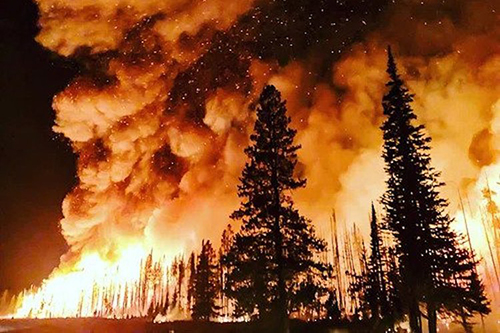As the world goes through an ecological transformation, so does the biodiversity and the living beings inside it. These changes – mostly due to human activity – have created an increase in emerging diseases to infect all living organisms.
The main contributors are the five global change drivers: biodiversity change, climate change, and chemical pollution, introduction of nonnative species, and habitat loss or modification. While all these factors have an influence on ecosystems, only four of them – biodiversity change, the introduction of new species, climate change, and chemical pollution – have been the main drivers of the increased disease risk.
Biodiversity Change
The loss of biodiversity is a large factor. This loss, driven by human influence on habitats, can disrupt our ecosystem’s balances and aid in the rapid spread of disease. Biodiversity can protect against disease through a phenomenon known as the dilution effect. This effect means that parasites and pathogens, which rely on having abundant hosts in order to survive, will evolve to favor the species that are common rather than rare.
Dr. Rohr, a scientist in the University of Notre Dame, states “as biodiversity declines, rare species tend to disappear first.” For example, ever since the increase in a common mammal called white footed mice, Lyme disease has been more prominent.
Climate Change and Chemical Pollution
Climate change and chemical pollution alter animal movements and habitats, ultimately bringing new species into contact and allowing them to swap pathogens. As temperatures increase, many organisms are expected to spread away from the overheating equator to find more comfortable habitats. Others may move up hills and mountains for a cooler climate.
According to Dr. Carlson, a biologist at Georgetown University, alerts are a frequent of the increased susceptibility of southeast Asia bat populations. Rising temperatures drive these mammals to seek regulated climate in new habitats. As viruses move to new host species, they evolve, and can potentially evolve in ways that make them more likely to infect people.
Mrs. Synder, an educator here at Loyola who teaches AP Environmental Science, sheds lights on what vectors of disease might entail. For example, “Mosquitos are limited in range by temperature and humidity. If a particular latitude north or south of the equator gets warmer or more humid, some species of mosquitoes may now thrive.” They can then spread Malaria or Nile West, increasing the range of infection.
Habitat Loss or Change
Contrary to the previous findings regarding that deforestation can increase the risk of diseases, urbanization appeared to reduce disease risk. Urban areas often have better sanitation and public health infrastructure than rural ones, allowing no chance for disease to spread as easily as it would in the rural atmosphere.
Moreover, there are fewer plants and animals to serve as disease hosts within cities. However, this does not mean that the lack of plant and animal life isn’t good, and it also does not exclude the fact that animals in cities are healthier. That’s not to say that a rural individual could be affected worse than someone living in the city. The bacteria in their environment and surroundings can provide immunity to fight off unknown or newer diseases.
According to Mrs. Synder, rather than dealing with the aftereffects of an outbreak, certain interventions such as heeding health department advice, monitoring international shipping of goods, and creating a proper sewage treatment can reduce the impact and risk of being introduced to known diseases.
Overall, expect to see some changes that our planet will undergo. Despite these challenges, certain measures can lessen the risk of disease outbreaks. Through heeding expert advice, monitoring international trade, and creating proper waste treatment, we can minimize the impact of disease.





